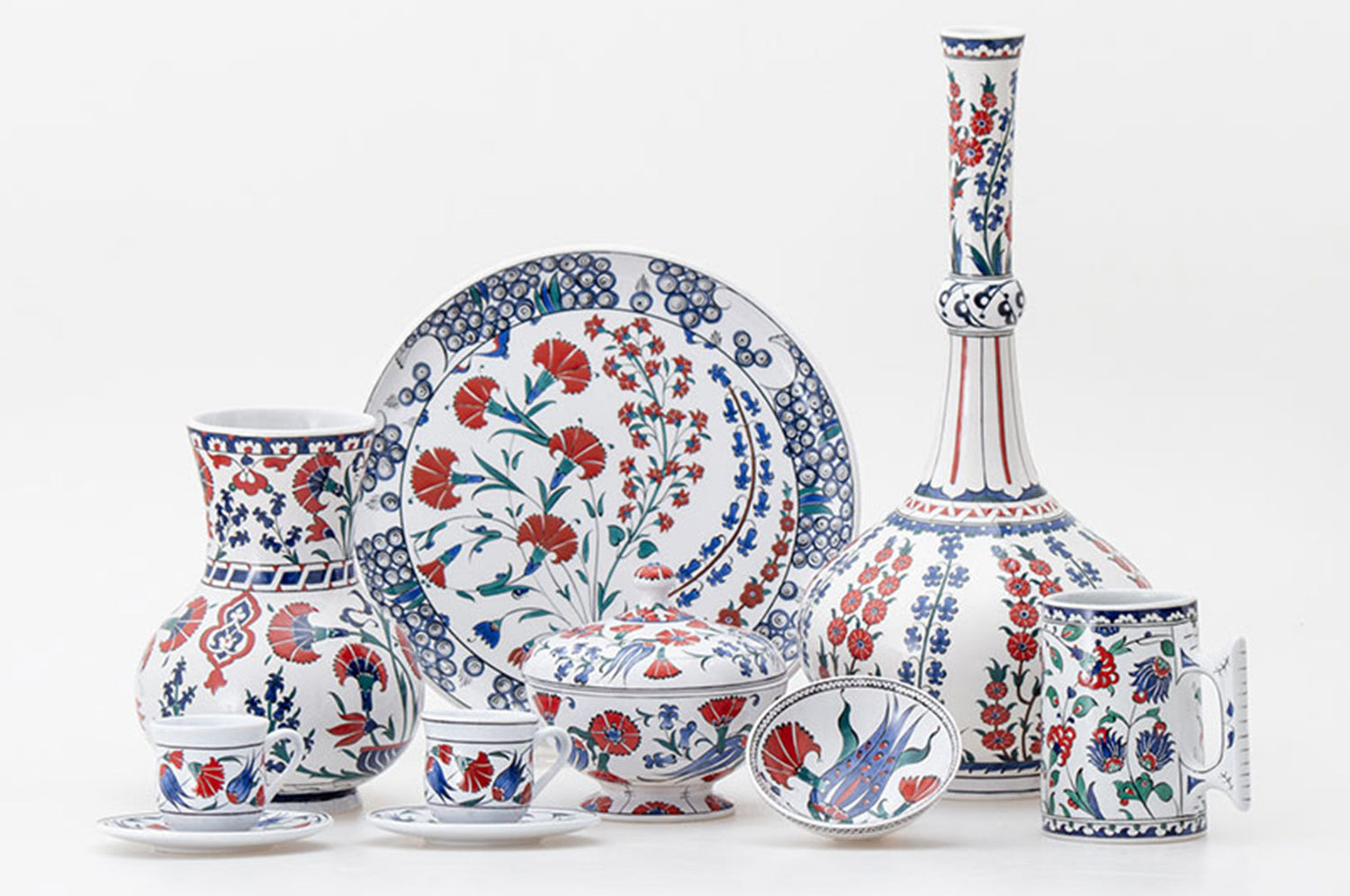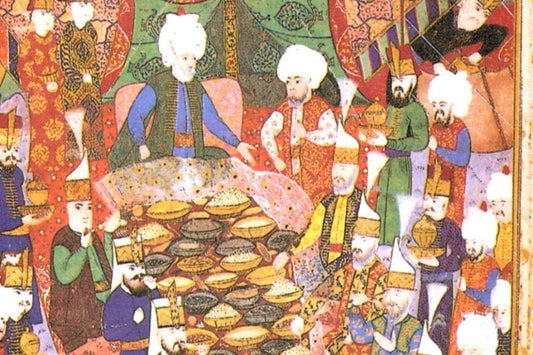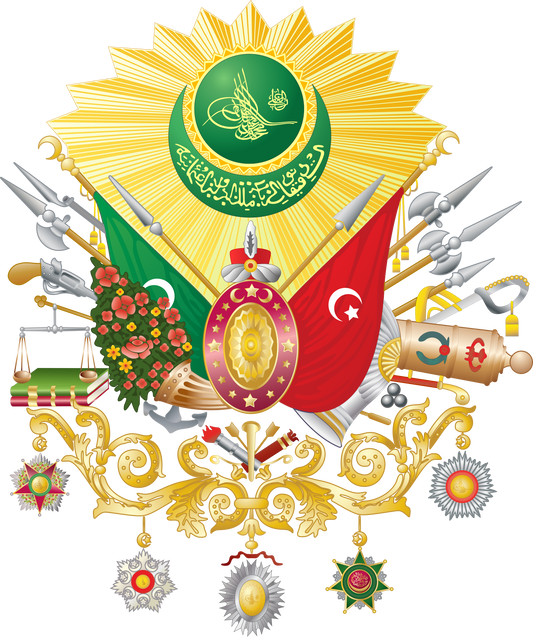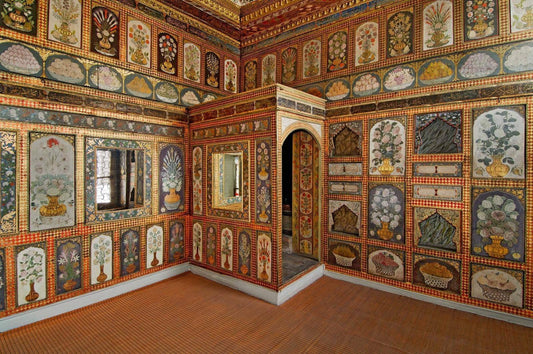Ottoman decorative art, a discipline that combines elegance and fine craftsmanship, has developed and evolved over centuries. One of its most important elements is the carnation motif. In Ottoman culture, the carnation was a symbol not only known for its pleasant fragrance and beauty, but also for its profound meaning in art and literature. Just as Chief Physician Salih Efendi recommended first observing a carnation by holding it in the palm of his hand, Ottoman artists meticulously crafted this flower in their artworks, inspiring countless works throughout history. The carnation found a place in diverse areas of Ottoman art, from Divan poetry to Iznik ceramics, from fabric motifs to the Rococo style, leaving its mark on art history as an elegant motif.
The Historical Journey of Carnation in Ottoman Culture
Carnations were cultivated with love for their pleasant fragrance and their variety of colors, whether layered or single, and rare varieties were developed during the Ottoman period. Chief Physician Salih Efendi, a 19th-century enthusiast, used to say that those who picked up a carnation and immediately smelled it didn't know what a carnation was; they should first be held in the palm of their hand and cared for. According to him, growing flowers was a labor of love; flowers held a significant place not only in daily life but also in art, literature, and folklore. Carnations were prominent in Ottoman decorative arts for their aesthetic and symbolic value.
Carnation Motifs in Divan Poetry and Art
In Divan poetry, the carnation, like the tulip and the rose, became an indispensable motif, with the beloved's face and cheeks often resembling this flower. The carnation motif first appears in illumination and halakiri in the mid-16th century. Although the halakiri decorations in the margins of the divan, which contains poems by Suleiman the Magnificent written under the pen name "Muhibbi," have been stylized and simplified, the carnations emerging from the earthen floor retain all their essential characteristics. These stylized carnation motifs reflect the sophisticated taste of Ottoman decorative art.
Carnation in Ottoman Decorative Art from the 16th to the 19th Century
From the second half of the 16th century onward, carnation motifs became one of the most widely used decorative elements in fabrics, embroidery, tiles, and ceramics designed by the Ottoman palace atelier. During this period, carnations assumed a prominent place not only in decorative arts but also in the decoration of architectural works. For example, traces of carnation motifs can be found in various sections of Topkapı Palace in Istanbul.
The carnation motif was favored not only for its elegance and aesthetic beauty, but also for its symbolic meanings in Ottoman society. The colors and shapes of the carnation can carry different meanings; red carnations represent love and passion, while white carnations represent purity and innocence. These motifs were used continuously in Ottoman art until the late 19th century, undergoing various changes and blending with different styles during this time.
By the 19th century, carnation motifs had become more decorative and ornate under the influence of new artistic movements influenced by Europe, particularly rococo and baroque. This artistic evolution of the carnation not only reflected changing aesthetic tastes in Ottoman decorative art but also reflected the cultural interactions of the period.
From Iznik Ceramics to Fabrics: The Journey of the Carnation Motif in Art
The famous fluffy coral-red carnations of Iznik ceramics, along with tulips, roses, and hyacinths, became characteristic flowers of classical Ottoman art. Their slender stems extend among other flowers, curving to the right and left, sometimes breaking and returning in the opposite direction. This style revived, largely unchanged, in Kütahya ceramics in the late 19th century. In the late 16th and first half of the 17th centuries, stylized fan-shaped carnation motifs were particularly popular on velvets called çâtma, woven as pillowcases and divan covers. Not limited to fabrics, they were also applied to metalwork, jewelry, rugs, and embroidery during the same period. Embroideries, which developed in parallel with Ottoman decorative art, underwent changes according to the tastes of the period. The motifs and compositions found in bundles, quilts, and pillowcases, especially those dating from the 16th and 17th centuries, embroidered with silk thread on linen fabric, reflect all the stylistic characteristics of the classical period. Stylized pomegranates, hatayi, tulips, carnations, and hyacinths, the primary motifs of the period, are arranged in a manner similar to those found on fabrics and tile panels. In the early 18th century, floral motifs were favored in the naturalistic style of the period, and attempts to create a third dimension were made using various shades of pastel colors.
From 18th-Century Naturalism to Rococo Style: Carnation in Ottoman Art
Beginning in the 17th century, flowers were depicted more closely to their natural appearance in the illumination of manuscripts, lacquered bindings, and flower magazines. In the 1685 Mahmud of Ghazni magazine, red carnations are striking among the flowers sprouting from vases in watercolor and paper-cut still lifes. In the paintings of Ali Üsküdari in the first half of the 18th century, carnations rendered with voluminous, color-graded, and curvy lines are among the finest examples in Ottoman art. Carnations continued to appear in rococo floral paintings of the second half of the 18th century and the 19th century, either alone or alongside roses and other flowers.
On the Trail of Art with Timeless Carnation Motifs
For centuries, the carnation has symbolized elegance and fine craftsmanship in Ottoman decorative arts. Finding its place in a wide range of works, from Divan poetry to Iznik ceramics, from fabric motifs to the Rococo style, the carnation motif has become an indispensable part of art history with its aesthetic and cultural value. Today, this elegant motif continues to live on in works of art and decorative designs. If you wish to bring this elegant Ottoman aesthetic to your home or workplace, you can explore our Ottoman-inspired carnation motif designs here .




